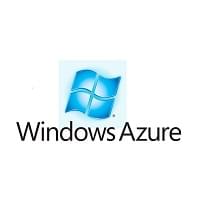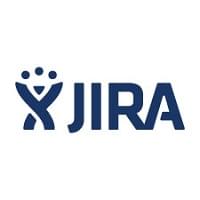What is app development software?
Broadly defined, app development software is a suite of various applications that enable people (usually software developers or engineers) to develop computer applications (apps). Developers may use any one of these tools as standalone solutions, but they typically use all of the tools together or a few at a time, depending on what stage of development they’re in. The applications developers use to make other computer applications include software environments such as software frameworks, integrated development environments (IDEs), and bug tracking tools. These software environments gather different components, compilers, programming languages, debuggers, source code editors, databases, and interfaces into one place to make it easier to develop applications for desktop and mobile devices or for the web. While software developers primarily use these tools to build native and web apps, they also help non-developers build tools for a variety of different purposes and functions such as small businesses, religious organizations, non-profits, and for personal or recreational use.Find your new app development software
Types of app development software
Software tools classified under the umbrella of app development software might be included in software development kits (SDKs), or they may serve as standalone solutions that can, in turn, be used with other solutions for software development. App development software can be broken down into the following four main subcategories, but other subcategories such as version testing and cloud computing also exist.Software framework
A software framework is an application that dictates a program’s flow of control. This differs from libraries and user applications, in which the caller dictates the control flow. Users cannot change the framework code, but they can override certain sections of its code and add extensions to it. You can think of software frameworks as a theme in PowerPoint. A PowerPoint theme gives you a consistent appearance and format, but you’re free to choose which variations you want to use. You’re also free to add onto existing themes. For example, AppKit is a framework provided for free by Apple. This framework lets a developer create user interfaces (UIs) for apps run in macOS — Apple’s main operating system for all of their computers. Software developers take many factors into consideration when choosing a framework to use. These include the operating system or platform that will run the developed app, the user experience a framework offers, and the programming languages compatible with the framework. Popular software frameworks include the .NET Framework from Microsoft, the Oracle Application Development Framework, and the Cocoa Umbrella frameworks from Apple.Integrated development environment (IDE)
Integrated development environments give developers all the tools they need to build apps using a given framework. IDE features vary, but most IDEs at least include a text editor, build automation tools, and a debugger. Some IDEs also include a compiler and/or an interpreter. Apple’s Xcode is an example of an IDE. Xcode integrates with the Cocoa and Cocoa Touch frameworks to help developers make apps for desktop, mobile, and internet of things (IoT) Apple devices.Bug tracking software
Bug tracking software tools keep track of software bugs. Bugs are typically reported by users or other developers testing the software. A bug tracking tool maintains a database of all reported bugs and usually allows developers to watch bugs for updates, set bug statuses, assign bugs to team members, and other actions. Many developers use bug tracking tools during the initial development phase to help plan user stories, and agile software developers use bug tracking tools on an ongoing basis to identify and fix bugs as they arise. Jira is a popular bug tracking tool, but many project management solutions like Asana and Wrike also include bug tracking features.No-code/low-code application development platforms
As more and more small businesses start to develop their own mobile applications, no-code/low-code application development platforms are becoming increasingly popular. These tools provide graphical user interfaces (GUIs) for building mobile, desktop, and web-based applications, using what-you-see-is-what-you-get (WYSIWYG) editors to remove or reduce the need for source code editing. These tools do for application development what platforms like Wix, Weebly, and Squarespace did for website development.[a][b] Popular examples of no-code/low-code application development platforms include AppSheet, Appy Pie, and Kintone.Best-in-class app development software
The following table gathers some of the top-rated app development software from multiple subcategories. In order of appearance: version testing, cloud computing, no-code/low-code application development, and bug tracking software. Frameworks and IDEs are not included in this list because they are free software tools that are custom-built by various different software companies to work exclusively for their own proprietary software.|
Product |
Industry Rating* |
Pricing Tier |
Free Trial |
|---|---|---|---|
 GitHub GitHub |
4.78 | low | Yes |
 Microsoft Azure Microsoft Azure |
4.30 | low | Yes |
 Bitbucket Bitbucket |
4.30 | low | Yes |
 Kintone Kintone |
5.00 | average | Yes |
 Google Cloud Platform Google Cloud Platform |
4.25 | high | Yes |
 Appy Pie Appy Pie |
4.57 | average | Yes |
 AppSheet AppSheet |
4.70 | low | Yes |
 Guidebook Guidebook |
4.73 | high | Yes |
 Amazon Web Services Amazon Web Services |
4.40 | average | Yes |
 Heroku Heroku |
4.43 | average | Yes |
 Jira Jira |
4.25 | average | Yes |
 Asana Asana |
4.25 | low | Yes |
What are the benefits of using app development software?
App development software solutions save developers from coding out every single aspect of an application in a plain text editor, but that isn’t the only reason to use these tools. Here are some of the biggest benefits of having app development software.Time savings
The biggest benefit of app development software is the amount of time it saves developers. Tools such as integrated design environments (IDEs), software frameworks, and no-code/low-code platforms keep developers from reinventing the wheel every time they start to develop a new application, leaving them to focus on being creative and refining processes and workflows instead of writing the same source code every time they want to make a new app.Improved visibility
Being able to see visual changes to an app while you work on it is a major benefit of using app development software. Instead of spending hours writing source code so you can run an application later to test it, tools like IDEs and no-code/low-code platforms show you changes in real time. This allows developers to identify potential problems sooner, which makes for a more responsive environment.User interface (UI) design help
Many IDEs also offer user interface (UI) design tools to help developers- see what designs look like across multiple devices
- view variations between portrait versus landscape orientations and across software versions
- put less time and effort into coding.


